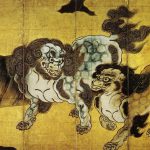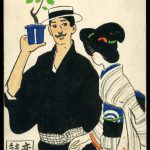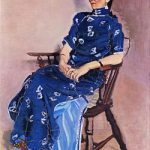Basic information about Japonism
Ukiyo-e made a profound impact on Western painting.
In the 19th century the world of art in Europe was seeking a way to overthrow the contemporary approach to painting, and it found its solution in the Japanese art, Ukiyo-e. Through events like the World’s Fair Japanese art gained fame, and with Japan’s restoration of diplomatic relations the number individuals importing Japanese crafts, art, and pottery began to increase. Interest in ukiyo-e began when painter noticed the paper used to wrap the goods they imported from Japan. At the time ukiyo-e were considered little more than entertainment for the masses. Due to woodblock prints being mass-produced once they had served their viewing and decorative purpose the could be rescued for other functions. The prints were reused because paper was incredibly expensive at the time, so finding other applications was a necessity. Ukiyo-e was introduced under practical circumstances rather than for art’s sake, and this came as a shock to many European artists who were impressed by the layout and bold compositions of scenes such as the Thirty-six Views of Mount Fuji.
Ukiyo-e were unique in that they eschewed the concepts of three-dimensionality and perspective that were pursued in Western art. The use of color in ukiyo-e was also comparatively bold with a clarity not usually seen in European art at the time. Artist were completely enchanted, collecting many ukiyo-e and incorporating their techniques. In his famous Portrait of Pere Tanguy, van Gogh interpreted a collection of ukiyo-e prints behind his subject. Vincent van Gogh’s undulating night scape Starry Night has also been identified as having influences form Hokusai’s Thirty-six Views of Mount Fuji. Ukiyo-e’s influence extended to other artists such as Renoir and his Girl with Fan, and Monet, who rarely used human subjects, and his painting of his wife in kimono in Le Japonaise. The number of artists influenced by Japanese woodblock prints during this time is too numerous to mention here.
To Europeans, Japan was for many years a closed and secluded country which only served to increase the mystique surrounding such a strange and unknown land. During this era the middle class in Europe became affluent and was able to import thee new handicrafts and techniques for this unknown land. At the same time Japan was embracing Western art, and subsequently studying and later producing art inspired by the west. As the era continued so did the arts of both the west and Japan continue to exhibit their reciprocal influence and development of each other.







